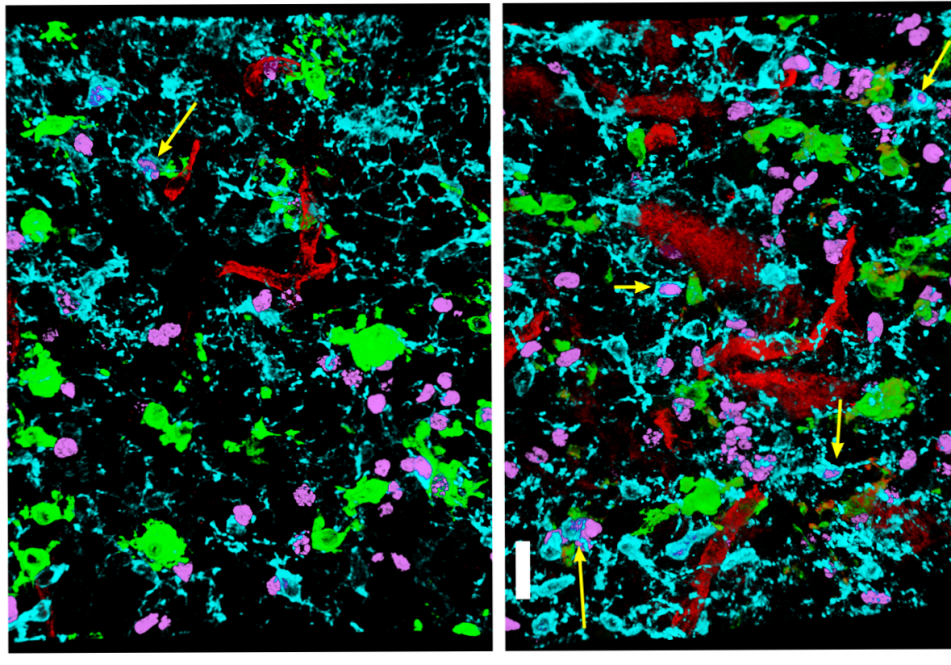When there’s damage in the body, our cells call for help. UConn brain researchers just found a new way cells do this—like in the old AT&T ad campaign, they reach out and touch someone.
Or some cell, rather.
UConn neuroscientist Akiko Nishiyama and graduate student Amin Sherafat report in the April 15 issue of Nature Communications that when the insulation around our nerves gets damaged, cells called microglia make a special protein they use to prod oligodendrocyte precursor cells (OPCs). The OPCs respond by making more insulation.
Wires need to be insulated or they short out; our nerves need to be insulated for the same reason. If the insulation deteriorates and is not repaired, it can lead to diseases like multiple sclerosis. Scientists used to think the insulation around nerves was static, and if it deteriorated there was nothing to be done. But now they know about OPCs. OPCs live in our brains and are continually ready to produce more insulation for our nerves as necessary. But it wasn’t clear how they were activated.
Microglia are another kind of brain cell. They have long been considered the bad guys of brains, because they always show up near injuries and inflammation. However, Nishiyama and Sherafat found that microglia located next to OPCs in the brain regions that are rich in nerve bundles will stick a particular protein on their cell membrane when the nerves are developing or damaged. The protein sticks out and actually touches nearby OPCs. When the protein touches a growth factor receptor on an OPC, the OPC starts to multiply and produce more mature versions of itself that make or repair the insulation. That seems to be one way, at least, that OPCs are activated.
Using a protein stuck in the cell membrane to actually touch and activate a growth factor receptor on an adjacent cell is an unusual way for cells to communicate. Sometimes cells that line organs such as the lungs or intestine stick together with proteins, but those cells are stationary. Microglia can move around, and they have a completely different origin than OPCs, making their communication more surprising.
The findings also explain why microglia are so often found near inflammation and damage: that’s where they do their job. Nishiyama and Sherafat suggest that instead of causing tissue damage, microglia in axon-rich regions might be sentinels, tasked with sensing changes in the insulation. And reaching out and touching OPCs with proteins might just be their way of getting their message across.
This study was supported by National Institutes of Health (NIH) grant R01 NS073425 and funding from the European Union’s Framework Program for Research and Innovation Horizon 2020(2014-2020) under the Marie Sklodowska-Curie Grant Agreement No. 845336. We thank Dr. Chris O’Connell, Director of Advanced Light Microscopy Core at UConn, for his assistance with the Leica SP8 confocal microscope, which was purchased with funds from an NIH Instrumentation Grant S10 OD016435.



